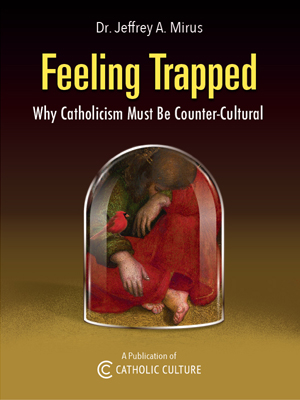Santa Maria Ara Coeli
by Zsolt Aradi
The Capitoline of Rome was once the top and center of the world. The Forum and this hill are the most ancient sites of Rome's more than three thousand year history. The Capitoline was the fortress of Rome and it still has the atmosphere of a citadel.
There were times when it completely lost its majesty and became a field of olive trees, and its present Italian name, Campidoglio, refers to this. The capitol, nevertheless, regained its importance; it has many approaches, roads, winding paths and stairs. One of the stairways, which has 124 steps, leads up to one of the landmarks of Rome, the Church of Santa Maria Ara Coeli, St. Mary of the Altar of Heaven. The name is based on a legend according to which Emperor Augustus had a vision and saw a beautiful lady--the Holy Virgin--standing upon an Altar of Heaven. This legend furthermore has been connected with the supposed prophecy of Virgil who, in his Fourth Eclogue, speaks about the arrival of the "Nova Progenies."
The virgin Astraea returns;
the Saturnian age of peace is renewed,
For a new order of generation is sent down
from the high heavens!
Early Christianity interpreted the legend and Virgil's poem as referring to the Coming of Christ.
The church was built in the seventh century and one of its chapels, the Chapel of St. Helena, is said to be the place where Emperor Augustus had his vision. The main altar is decorated by an image of the Virgin, allegedly the work of St. Luke.
St. Maria Ara Coeli is associated with many historical and religious events. The church actually is most cherished by the Romans because of an olive wood statue of the Christ Child brought to Rome during the sixteenth century. The olive wood is from the Mount of Olives in Jerusalem. Because of this lovely image of the Christ child, the church is the center of Christmas devotion. It becomes entirely a church of children. At Christmas and Epiphany it is a site of unforgettable scenes. Around the crib and the image of the Santo Bambino, children recite sermons and engage in religious dialogues.
Christmas time in Rome has no other connotations than that of the celebration of Christ's nativity. In many other countries, gifts to children are distributed on Christmas; in Rome, the gifts are made at Epiphany and the giving of presents is completely separated from the celebration of Christ's nativity.
Thus Ara Coeli can be considered as one of the most meaningful sanctuaries recalling the arrival of "the fullness of the ages," i.e., the arrival of Christ. The vision of Augustus, the prophecy of Virgil, the presence of the image of the Santo Bambino and the century-old celebrations connected with it, justify its unique fame.
During modern times, the Capitoline has again regained its importance as the center of Rome; the surrounding area has been cleared of slums and the Campidoglio now stands in the center of the city, where the great arteries of Rome meet: the Via Dell' Impero which leads to the Coliseum and which on both sides is flanked by the most ancient monuments of Rome, the Forum and the ruins of the imperial palaces; on the other side, bordered by the Via Del Mare, which leads out to the Appian Way. To the north, the Capitoline faces the historic Piazza Venezia and the Corso, ending in the Via Flaminia along which most of the pilgrims came to Rome over the past centuries. Standing on top of the hill, on Via Monte Tarpeo, the Way of the Tarpeian Rock, one can see almost all the great monuments and churches of the ancient, medieval and modern Rome. This is only part of the setting, which frames the Church of Ara Coeli, which at the top of the 124 steps of white marble dominates the ancient imperial heart of Rome. And this church also is dedicated to the Virgin.
This item 2988 digitally provided courtesy of CatholicCulture.org







